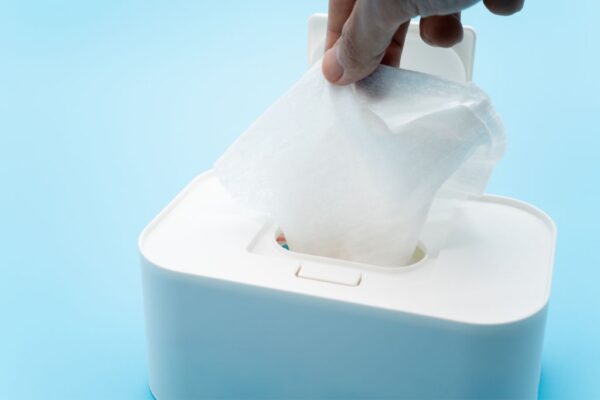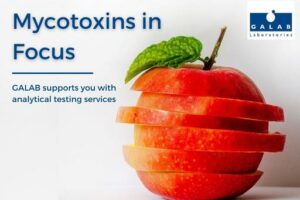Food Packaging Testing

Food packaging testing
Packaging is actually only a packaging at first glance. In fact, it is often a multifunctional object. Because their task is not only to protect the product from environmental influences, but also to maintain the sensory quality, i.e. the appearance, taste, smell and consistency. A packaging can therefore consist of many different components, each of which has its own function. A complex matter, especially as care must be taken that the materials used do not pose a risk to the consumer. Since the world of cartons, colors and foils is also a world full of standards and regulations that have to be observed.
To support you, we can offer you a large portfolio of analyzes and advice. From global migration to specific migration, such as for mineral oil, plasticizers, bisphenol A or photoinitiators, as well as in dialogue with you decide which analysis is relevant to the conformity check of the materials used.
Materials
The packaging of food serves to protect its content, supplies information and is for labelling purposes of a product as well as promotion. Most foods cannot be stored without suitable packaging and are thus not marketable. A variety of materials is used for the packaging of foods. Apart from plastic and cardboard/paper, the most common packaging materials are tins made of aluminium or tinplate and glass jars, for example for baby food.
There are numerous requirements for packaging. Nowadays there are innovative packaging materials with functional properties, so-called active materials. However, there are legislative limitations: Packaging must not deceive consumers regarding the condition of the food. For example, packaging materials absorbing volatile amines (parameters for decay of a food) are not acceptable.
Migration
Packaging materials for food are not completely inert so that components like residual monomers or additives may migrate into the product. To avoid health hazards there are limits for the migration of substances into food – global migration and specific migration limits (SML) – depending on the toxicological assessment of substances.
You have a high quality product? Then consider appropriate packaging. We check your packaging for undesired substances.
Declaration of Non-Objection According to Food Law
We check compliance of your products according to legal requirements like consumer goods regulation 1935/2004, EC regulation 10/2011 (PIM) or BfR recommendations (Federal Institute for Risk Assessment). We support you with our knowhow in checking documentation according to the IFS packaging guideline which demands traceability of packaging material.
Food contact materials testing
Contact with Food
Houshold goods are consumer goods intended for contact with food or already in contact with food. Regulations of the EC framework 1935/2004 apply to these materials and objects. According to this regulation commodity goods with food contact must not release substances into food in an amount which is hazardous to human health or which alter the composition of the food to an unwarranted extent.
Transition of Contaminants
The Federal Institute for Risk Assessment (BfR) demonstrated that kitchen ware and crockery made of melamine formaldehyde resin (MF resin) release the monomers melamine and formaldehyde at temperatures above 70 °C. For the safety of your products we check your products for residues of various contaminants. Whether your material releases critical substances is determined with migration tests or saliva/sweat resistance tests. Plasticisers, bisphenols, PAH or heavy metals are hazardous contaminants in food.
Sensory Tests
Apart from physico-chemical analyses the sensory quality for commodity goods with food contact are of great importance. Regulation 1935/2004 demands that an organoleptic impact on the food by contact materials must be ruled out. This means that these materials must not alter a food – neither its smell nor its taste. Our experienced sensory panel will carry out these tests for you!
Plastic packaging testing
Product Safety – Strict Requirements
Plastic is one of the most important materials for food packaging and packaging films. High-quality, technically elaborate contact materials for food are made of plastic. Whether you are involved in the value-added chain as a producer of raw materials for plastic materials, as a packaging manufacturer, food producer or trader – there are strict requirements on the safety of your products and their documentation.
Compliance – Documentary Check
We support you with our knowhow in checking documentation according to the IFS packaging guideline which demands traceability of packaging material. We tick a checklist to control whether documents for your packaging are complete and comply with legal requirements and further specifications. We support you in determining your analysis needs and provide you with an individually tailored offer.
Quality Assurance
We check your products according to current law and regulations like the framework 1935/2004 or regulation 10/2011, the plastic implementation measure (PIM) or recommendations of the BfR (Federal Institute for Risk Assessment). We have more than 5000 highly sensitive single analyte methods ready for you which are suitable even for specifications going beyond legal requirements!
Cardboard and paper packaging testing
Requirements
Paper and cardboard are important materials for food packaging. Packaging must not adversely affect the contained food. General requirements of EU regulation 1935/2004 state that no substances must migrate into food which are hazardous for human health, and no unacceptable changes in the composition of food or of organoleptic properties must take place. In addition, specific requirements for paper and cardboard with food contact are described in the BfR recommendation XXXVI (Federal Institute for Risk Assessment).
Recycling
Recycling of raw materials is of great importance for the production of paper and cardboard packaging. The aim of the German packaging regulation VerpackV is the recycling of 60 % of packaging waste made of paper and cardboard. To avoid impacts on the environment hazardous and dangerous substances in packaging materials like heavy metals, for example, are therefore limited.
Further substances which may be present as components of printing dyes or adhesives are also relevant for the production of recycled packaging. The BfR defines limits for the migration of hazardous substances which may be introduced into the food by paper recycling – like phthalates, Bisphenol A, primary aromatic amines and Anthraquinone.
Analysis
We check your products for residues of undesired substances. We have a broad range of validated, highly sensitive analytical methods ready for you. Whether an olfactory or taste alteration of the packed food has taken place is determined by a sensory analysis of your packaging or food. In addition with a microbiological analysis of your product, you take no chances and play it safe for the future.
Parameters & Analytical Methods
-
State-of-the-Art Analysis
We constantly update our spectrum of parameters to the latest developments in the food analysis sector and offer state-of-the-art analytical methods for the safety of your products.
-
Comprehensive multi-methods
We are constantly expanding our range of services in order to be able to guarantee you a comprehensive range of analyses. We offer multi-methods for mycotoxins, dioxin analysis or molecular biological analysis for GMOs and allergens. The GALAB Pesticide500Plus® multi-method can even be used for difficult matrices such as spices and herbs.
-
Constant development
If you cannot find the parameter/analysis you are looking for here, please do not hesitate to contact us. Our research and development department implements your requirements and specifications cost-efficiently and with a high quality standard.
-
Quality Policy
GALAB Laboratories has implemented a quality management system to allow for optimum service for their customers. It is our goal to establish close relations to customers by customer satisfaction. Therefor quick reactions to customers’ specific needs as well as considerations for quality demands of the market are necessary. We strive to provide comprehensive and professional advice to our customers. Learn more
Get in touch, we will help you.






